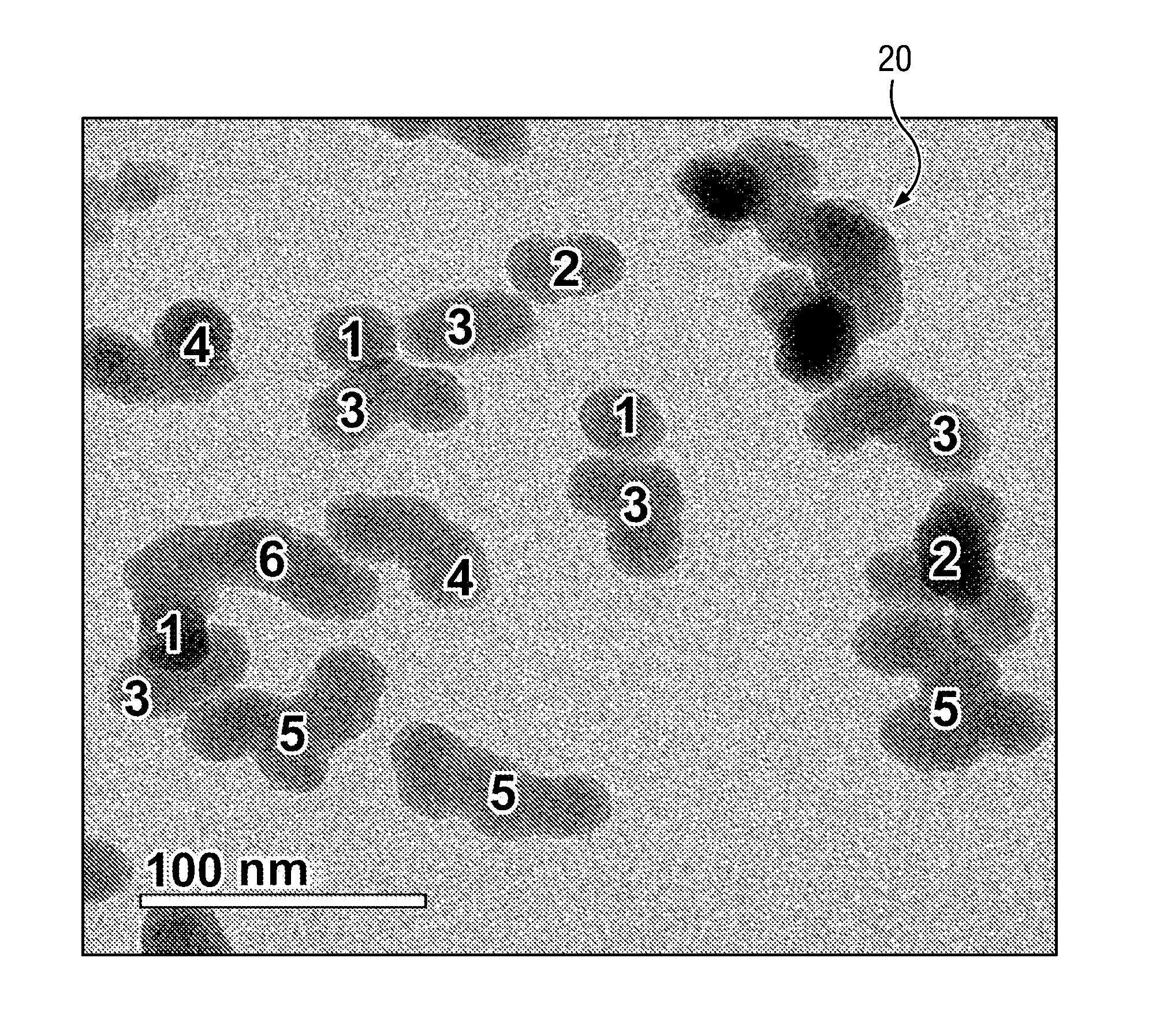Tungsten chemical-mechanical polishing composition
a technology of chemical mechanical and polishing composition, which is applied in the direction of electrical equipment, chemistry apparatus and processes, other chemical processes, etc., can solve the problems of continuing and severe downward pricing pressure in the semiconductor industry
- Summary
- Abstract
- Description
- Claims
- Application Information
AI Technical Summary
Benefits of technology
Problems solved by technology
Method used
Image
Examples
example 1
[0114]The tungsten and silicon oxide (TEOS) polishing rate were evaluated in this example for various polishing compositions. This example demonstrates the effect of the colloidal silica, the iron containing accelerator, the oxidizer and the mean particle size of the colloidal silica on the tungsten and TEOS polishing rates. Each of polishing compositions 1A-1E included colloidal silica abrasive particles having a core shell structure in which a hydrolyzed or partially hydrolyzed aminopropyl trialkoxysilane (an aminosilane) was incorporated in the shell using a procedure similar to that described below in Example 11. Compositions 1A-1C and 1E had a mean particle size of 60 nm while composition 1D had a mean particle size of 48 nm. Polishing composition 1F included PL2 colloidal silica available from Fuso Chemical Company (Tokyo, Japan). Concentrated dispersions including the above described colloidal silica abrasive particles were added to mixtures of ferric nitrate nonahydrate (Fe(...
example 2
[0117]The tungsten etch rate, zeta potential of the colloidal silica, and electrical conductivity of the polishing composition were evaluated in this example for various polishing compositions. This example demonstrates the effect of various tungsten etch inhibitors on these metrics. Each of polishing compositions 2A-2K included colloidal silica abrasive particles having a core shell structure in which a hydrolyzed or partially hydrolyzed aminopropyl trialkoxysilane was incorporated in the shell using a procedure similar to that described below in Example 11. A concentrated dispersion including the above described colloidal silica abrasive particles was then added to a mixture including malonic acid, ferric nitrate nonahydrate (Fe(NO3)3.9H2O), and water such that the final concentrations in the compositions were as follows: 1.0 weight percent colloidal silica, 30 ppm ferric nitrate nonahydrate, and 61.8 ppm malonic acid. The pH of each composition was then adjusted to 4.0 using nitr...
example 3
[0121]The tungsten and silicon oxide (TEOS) polishing rate were evaluated in this example for various polishing compositions. This example demonstrates the effect of the iron concentration and various tungsten etch inhibitors on the polishing rates. Each of polishing compositions 3A-3I included colloidal silica abrasive particles having a core shell structure in which a hydrolyzed or partially hydrolyzed aminopropyl trialkoxysilane was incorporated in the shell using a procedure similar to that described below in Example 11. Concentrated dispersions including the above described colloidal silica abrasive particles were then added to mixtures including malonic acid, ferric nitrate nonahydrate (Fe(NO3)3.9H2O), and water to obtain the various polishing compositions. A corresponding tungsten etch inhibitor was added to each composition. Each of the compositions included 0.5 weight percent because of the colloidal silica abrasive having a mean particle size of about 55 nm. Each compositi...
PUM
| Property | Measurement | Unit |
|---|---|---|
| mean particle size | aaaaa | aaaaa |
| weight percent | aaaaa | aaaaa |
| weight percent | aaaaa | aaaaa |
Abstract
Description
Claims
Application Information
 Login to View More
Login to View More - R&D
- Intellectual Property
- Life Sciences
- Materials
- Tech Scout
- Unparalleled Data Quality
- Higher Quality Content
- 60% Fewer Hallucinations
Browse by: Latest US Patents, China's latest patents, Technical Efficacy Thesaurus, Application Domain, Technology Topic, Popular Technical Reports.
© 2025 PatSnap. All rights reserved.Legal|Privacy policy|Modern Slavery Act Transparency Statement|Sitemap|About US| Contact US: help@patsnap.com

